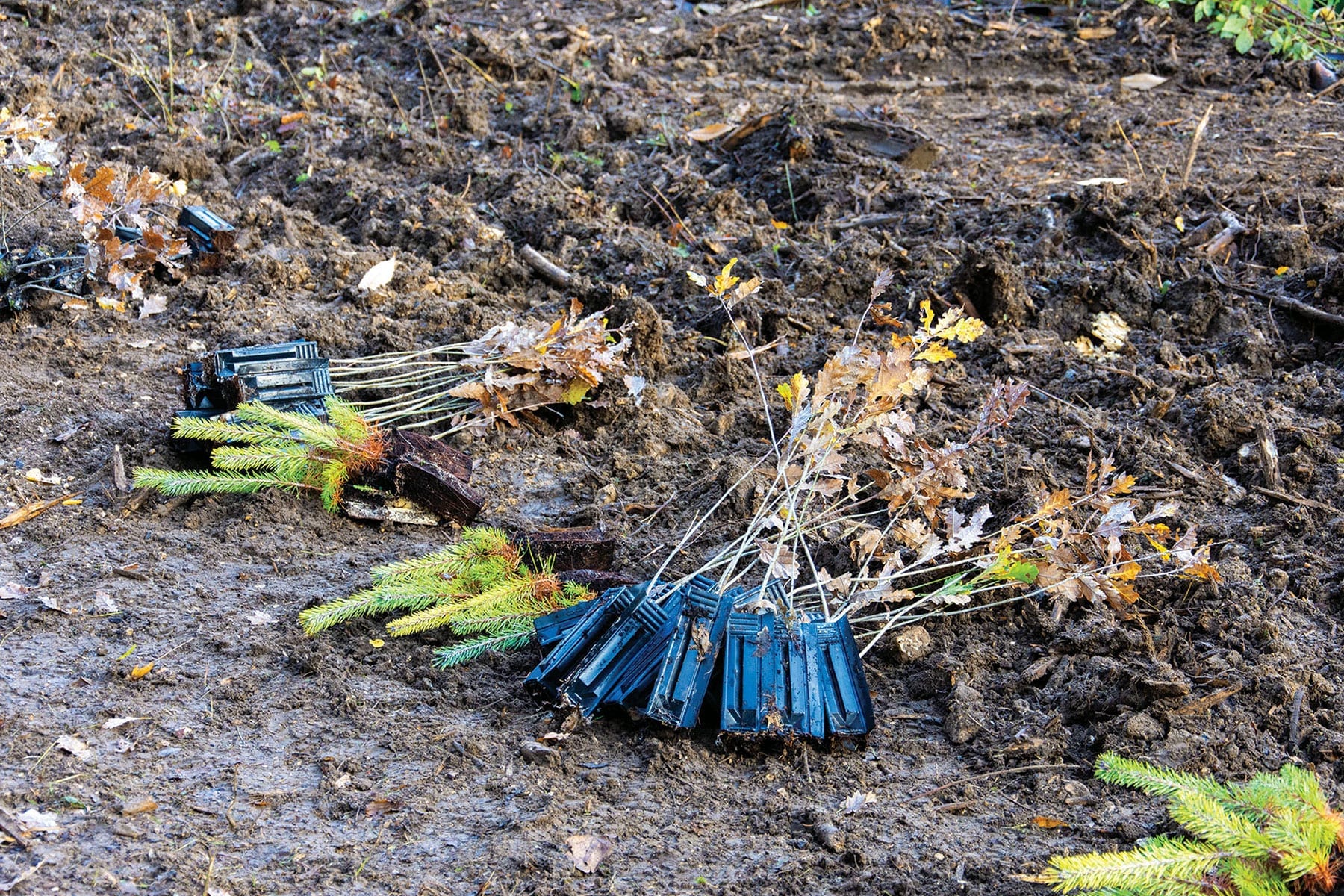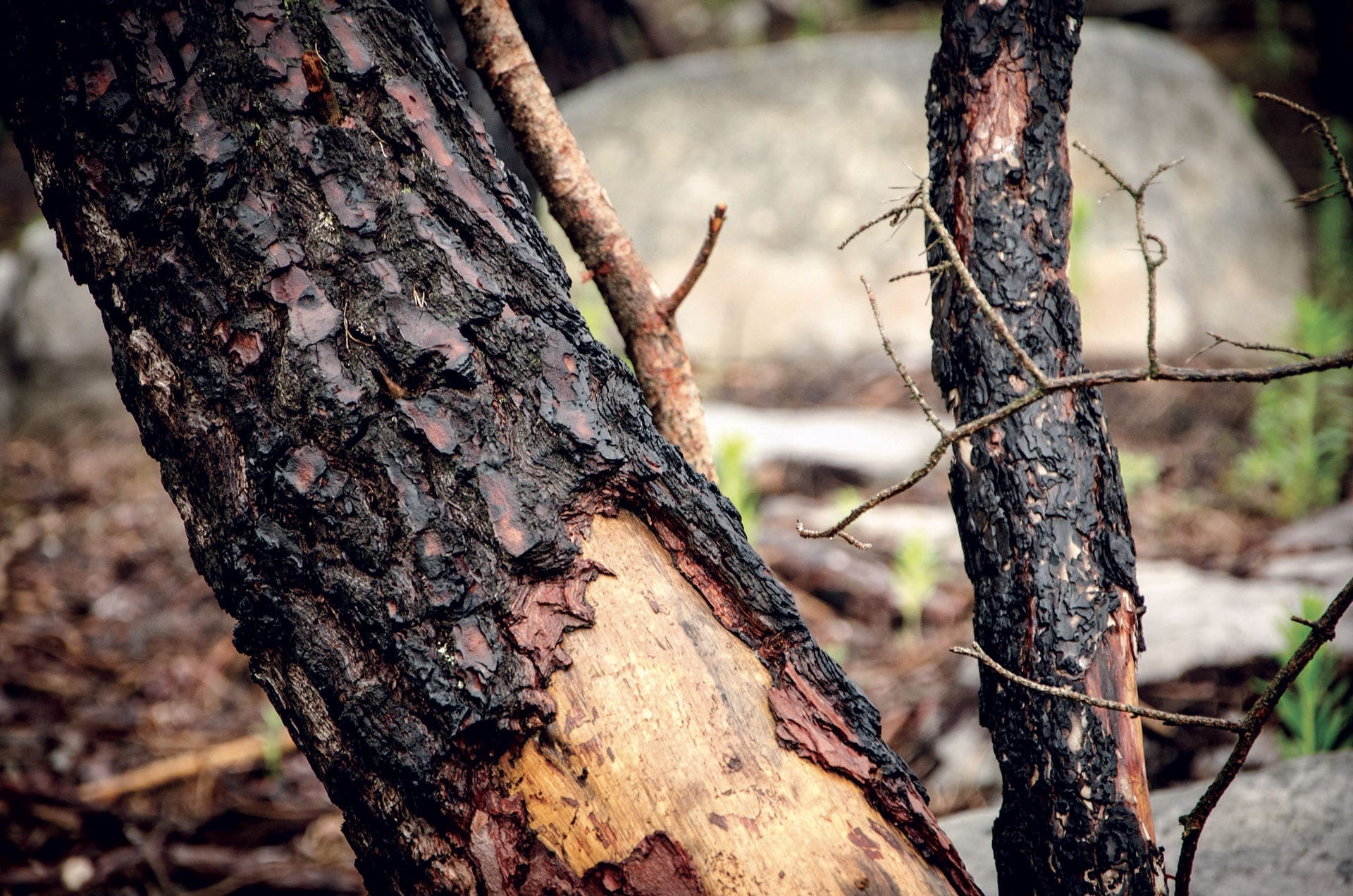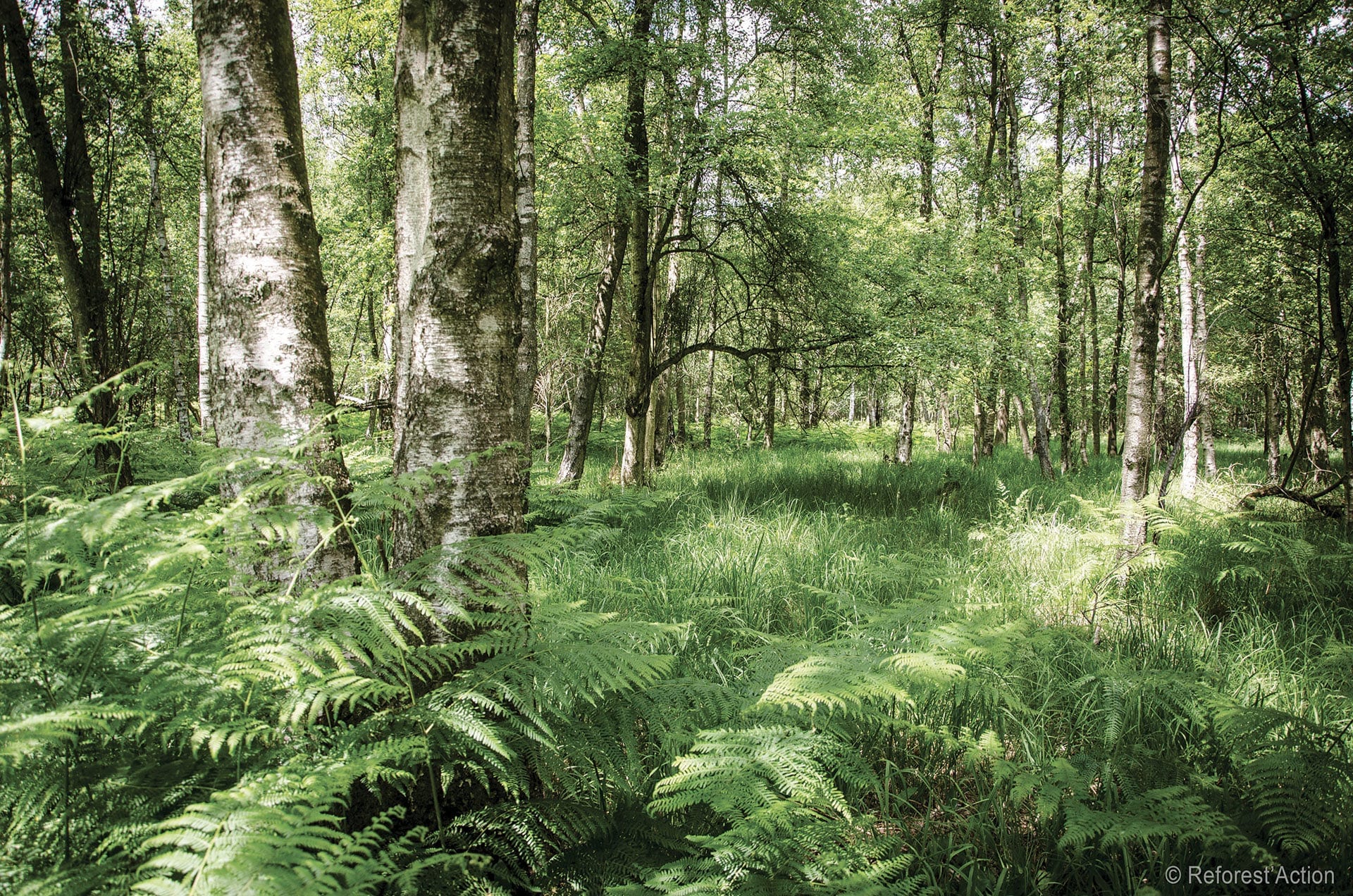Diverse Forests Are Essential for the Future
Trees are the rising stars for tackling the climate crisis. The 2019 EU Green Deal announced a new EU Forest Strategy to include effective afforestation, while the January 2020 pledge for 1 trillion trees at the World Economic Forum signals an important boost to tree-planting and reforestation globally. Trees play an essential role in a greener future, but reforestation should not become green-washing for companies and countries to continue polluting. Business as usual must change and efforts need to maximize long-term health, water, air and climate benefits. Reforest’Action is one crowd planting platform achieving this through the reforestation of mixed forests, a key to tackling mounting climate challenges.
Due to their natural capacity to absorb CO2, forests are one of the most sought after natural solutions to fight against climate change in the eyes of a growing number of leaders and decision-makers. Scientists and international organizations also stress the need for reforestation in addition to forest protection; however, it must be carried out under the right conditions. Replanting diversified forests is essential for two main reasons: Forests composed of several species are more resistant to climate and natural hazards and they provide more ecosystem services than single-species forests. Mixed-species forests are key given the environmental challenges ahead, such as unprecedented droughts, the rising risk of wildfires and the development of insect pests populations.

Forests are our past and future
Trees first appeared on Earth 360 million years ago and have contributed to a wide range of ecosystem functions, providing vital and recreational contributions to people for thousands of years. Trees are significant sources of oxygen and wood, serve as carbon sinks, regulators of the water cycle, and are crucial for innovation in the fields of energy, construction, aviation and health. And forests are a popular destination for outdoor leisure and recreational activities. Today, more than 1.6 billion people directly depend on forests for their livelihoods.
The future of humankind is intimately linked to the future of forests. They represent the world’s largest terrestrial storehouses of carbon and provide habitat to more than 80% of terrestrial biodiversity. By protecting and restoring forests, we are addressing two of the greatest challenges ever faced by humanity: climate change and the erosion of biodiversity.
Dire climate forecasts for forests
If current CO2 emissions continue, we will experience an increase in global temperature by 4°C or even 7°C by 2100, signaling the urgent need to vigorously accelerate reduction efforts. Europe will be directly affected by this rise in temperatures. For instance, France could experience summer heat peaks of more than 50°C by 2100 and some regions could even reach 55°C.
Directly linked to the rise in temperatures, drought is the primary factor 2 affecting tree growth in forest soils. French forests will not be spared by this phenomenon and our forests represent the 4th largest forest area in Europe. Researchers predict an increase in the frequency of heat waves and droughts, as well as the ever-worsening average intensity of soil droughts. In Europe, forest inventories have recorded an increase in tree mortality over the past 15 years, which is thought to be caused by droughts. It is also known that the natural migration of French tree species at the current rate of 50 km per century will become considerably slower than the migration of their potential bioclimatic envelopes, which should move about 500 km northwards. In this context, the rate of extinction of local forest plant species is estimated to reach 30% by 2050 in Europe.
The extinction rate of local forest plant species in Europe is estimated to reach 30% by 2050.
Source: Assessing the Effects of Forecasted Climate Change on the Diversity and Distribution of European Higher Plants for 2050 (Bakkenes et al., 2002)
Some scientific researchers are also contemplating a longer drought recovery time for ecosystems and for forest ecosystems. The period of timebetween two drought episodes could become shorter than the recovery time itself. This would entail an ongoing situation of incomplete recovery of forest ecosystems with an increased risk of reaching a critical point for trees potentially leading to mass forest dieback. California has experienced a historic drought and lost about 102 million trees between 2010 and 2016; in 2016 alone, 62 million trees were lost and overall, approximately 3 million hectares of forest have died out – an area equivalent to Belgium.
Forests more affected by droughts will be more exposed to fires. In 2020, 50% of French forests will be exposed to a high risk of fire. In addition, over this century, storms originating from American tropical cyclones are expected to increase on the western flank of Europe. Storm damage could double in Europe by 2100 as a result of rising productivity in forest management increasing the size of trees and thus their sensitivity to wind.
Overall, it is currently estimated that 20% of European forests will be affected annually by both abiotic (storms, drought, etc.) and biotic (insect pests, pathogenic fungi, etc.) hazards. It is also known that global warming contributes to increasing the population of insect pests and their winter survival. Drought and rising temperatures can weaken trees and enhance their vulnerability to insects. Thus, pathogens causing tree diseases and forest dieback can affect the economic values provided by the forest as they contribute to tree mortality, reduced growth or lower wood quality. In parallel, the number of exotic insect species and imported pathogenic fungi is exponentially rising in Europe.

Diverse forests provide more ecosystem services
Consisting of a diverse range of tree species, mixed forests are generally (but not systematically) more resistant than monospecific stands. A study published by Nature in 2018 on 40 forest sites around the world found that forests with various tree hydraulic traits are more resistant to drought. After a cut or a fire, researchers recommend to replant several tree species according to the best possible hydraulic combination. Several studies show that mixed forests are more resistant to storms and reduce the risk of large-scale damage. In essence, the more surviving trees there are, the bigger the potential is for natural regeneration. And natural regeneration is always cheaper than replantation.
In addition to the variety of species, genetic diversity within a single species is recognized by the French Ministry of Agriculture and Food and the Institut National de Recherche en Sciences et Technologies pour l’Environnement et l’Agriculture (IRSTEA) as an essential factor in the adaptation of forests to global warming. The two institutions recommend opting for both mixed species and a mixed genetic origin of the seedlings within the selected species.
In the face of insect pest attacks, single-species forests register 30% more damage than forests sheltering mixtures, in particular because of the presence of non-host trees reducing the number of target trees accessible to insects. The variety of species also entails a variety of colors and odors. These visual and olfactory elements slow down the development of insect populations and limit their damage. The different species also harbor more predators capable of regulating insect pests.

Ecosystem services are the benefits supplied to human societies by the complex and rich ecosystem functions. The subject appeared in the 1970s and has seen a growing interest since 2000 due to reference publications such as the Millennium Ecosystem Assessment in 2005 and The Economics of Ecosystems and Biodiversity (TEEB) report published in 2010. Ecosystem services such as bee pollination are provided for free and play a key direct contribution to human well-being and economic development. Forest ecosystem services include environmental services (CO2storage, water filtration, soil retention, improved air quality, protection against natural hazards), economic services (timber production, hunting and gathering) and social services (provision of recreational facilities, water filtration, improved public health and well-being).
In 2016, a group of researchers demonstrated that the homogenization of tree species in European forests reduces their capacity to provide ecosystem services, such as wood production or carbon storage. Scientists specify that the use of more tree species in plantation forests can promote their multi-functionality. This correlation between forest diversity and the production of ecosystem services such as wood has been confirmed by an international team of 90 institutions from 44 countries that came together to form the Global Forest Biodiversity Initiative (GFBI) in 2016. As forest diversity declines, so does their productivity. For instance, a 10% decrease in tree species within a forest leads to a 2-3% decline in its productivity. A 25% reduction in tree species also weakens the forest’s capacity to store carbon by more than 7%.
At the end of 2017, a new pan-European study analyzed 26 ecosystem functions of forest plots spread over 6 countries on the continent. The results show that the provision of services, such as biological tree growth or carbon storage, is more important in mixed forests with tree species compared to mono-species. Interestingly, the positive correlation between forest diversity and ecosystem functioning is even more robust in regions with lower water availability, such as southern Europe.
Diverse forests are allies for the future of climate and biodiversity, and so are the invaluable ecosystem services they provide to our societies and on which we all intimately depend. Protecting forests and restoring degraded ecosystems by replanting or supporting the regeneration of a variety of tree species: this is the challenge all of us should endorse and support through quality reforestation initiatives placing diversity at the core of their actions.
Read how REVOLVE has teamed up with REFOREST’ACTION for reforestation efforts.